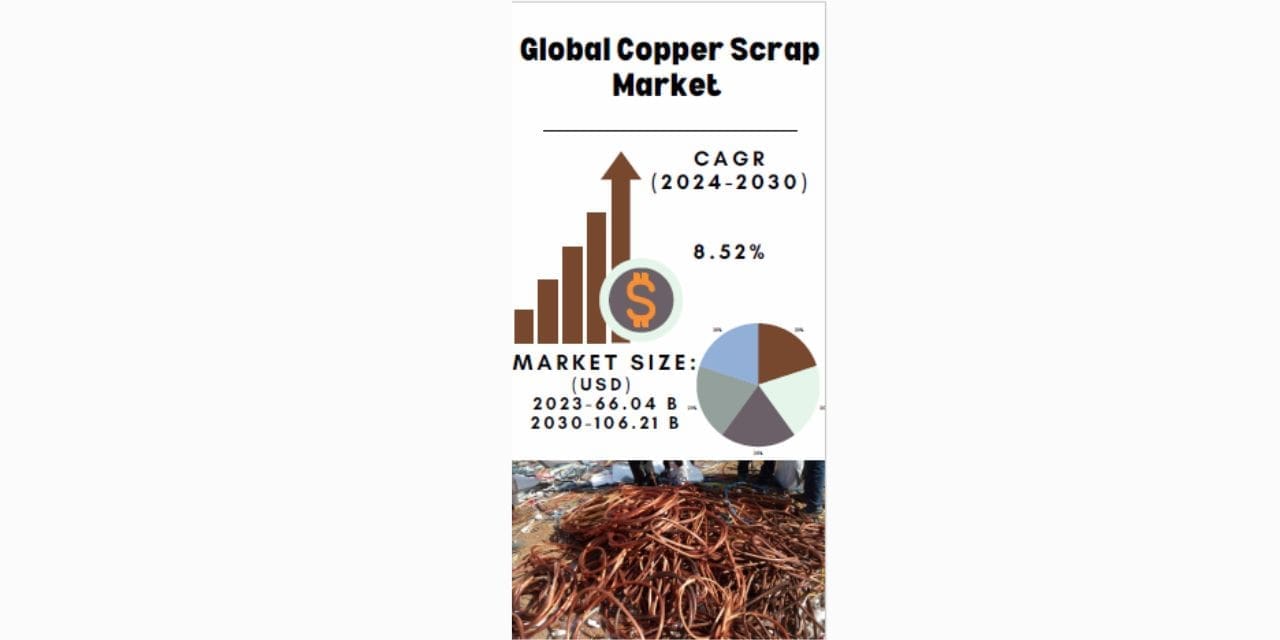The copper scrap market is a crucial element within the metal recycling sector, encompassing recyclable copper materials sourced from multiple outlets like electrical cables, machinery, and plumbing. Its growth is fueled by the escalating global demand for copper in industries such as construction, electrical, electronics, and automotive. Market dynamics are further shaped by the increasing adoption of sustainable approaches, regulatory measures supporting recycling, and the fluctuating costs of newly mined copper. Given the mounting emphasis on environmental and resource preservation, the copper scrap market assumes a vital role in lessening the necessity for mining and mitigating associated environmental repercussions. This market’s value is underscored by its promotion of sustainable practices, conservation of resources, and fulfillment of copper requirements across various industrial domains.
Copper scrap is defined as unused or discarded copper items that are suitable for recycling. These items include a range of copper products like cables, wires, pipes, fittings, and electrical components that have been replaced or are no longer in use. Recycling copper scrap is valuable because it helps to reduce the extraction of new copper ore and preserve natural resources. The recycling procedure encompasses segregating, shredding, melting, and purifying the copper scrap to generate top-grade copper products. This eco-friendly method encourages awareness about environmental protection, fulfills the worldwide need for copper, diminishes waste, and advocates for the principles of a circular economy.
Extensive research indicates that the Asia Pacific region is poised to lead the worldwide copper scrap market. The region’s dominance can be linked to the swift industrial and urban development in nations like China and India, driving up the requirement for copper across industries like construction, electrical appliances, and automotive manufacturing. Moreover, the substantial manufacturing sector and escalating infrastructure ventures in the region play vital roles in solidifying its position in the copper scrap market.
The primary contributor to the global copper scrap market is anticipated to be the category of old scrap. Old scrap, comprising copper products that have completed their life cycles and are recycled for their copper content, plays a crucial role as a valuable source of copper supply in response to the increasing demand for copper. Furthermore, recycling old scrap promotes
sustainability by lessening the requirement for primary copper production, which underpins the dominance of the old scrap sector within the global copper scrap market.
Within the spectrum of grades present in the global copper scrap market, it is projected that #1 Copper Scrap will take precedence. Notably, #1 Copper Scrap is prized for its superior quality characterized by minimal impurities and a high copper content percentage, rendering it highly sought after for recycling and reprocessing endeavors. Its abundant availability further
consolidates its preeminence in the market. The ascendancy of #1 Copper Scrap can be ascribed

